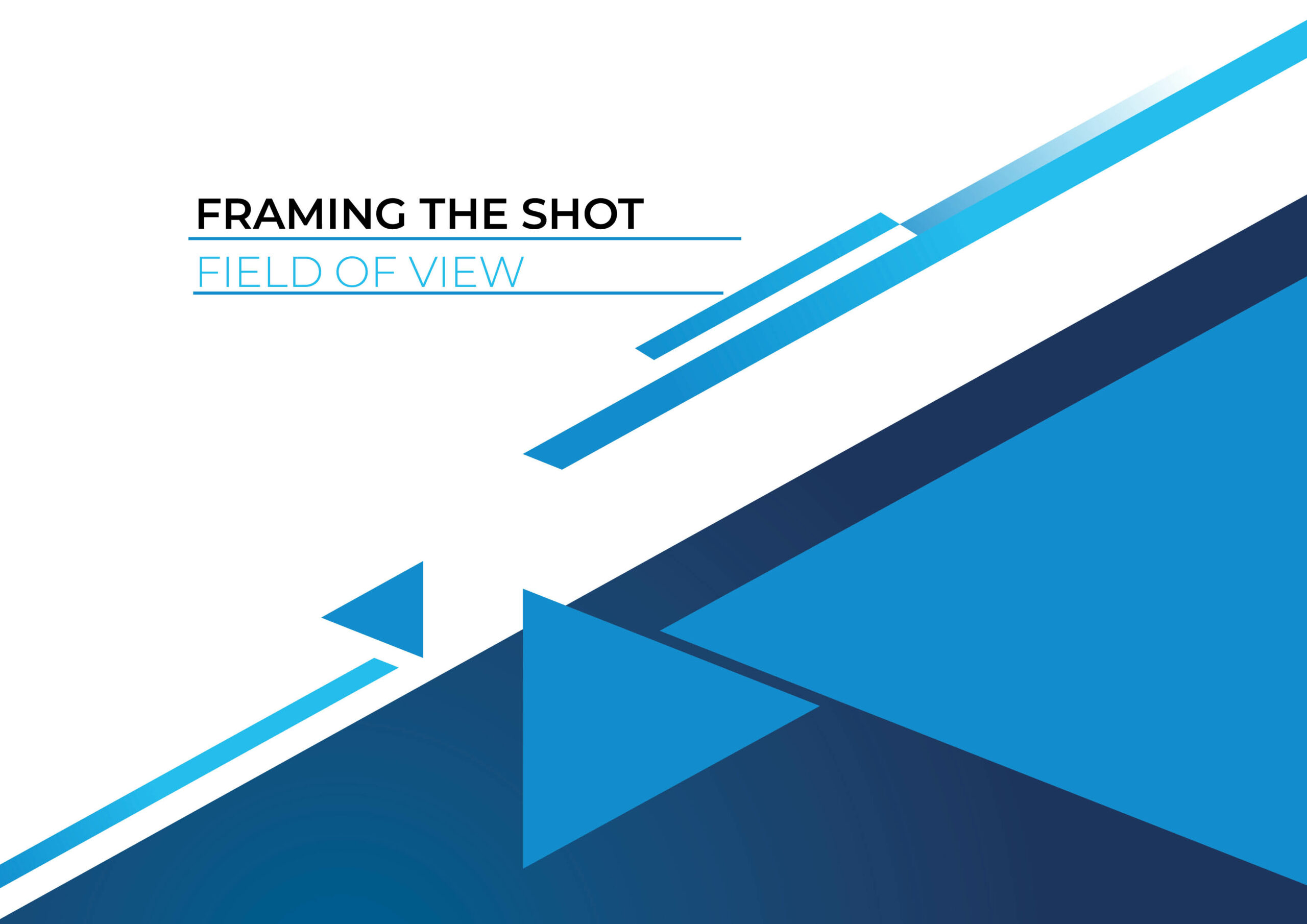Content Strategy

R2.1 The Psychology of Field of View
Overview
Field of view (FOV) in photography, influenced by focal length, sensor size, and photographer’s distance from the subject, is crucial for image composition. Shorter focal lengths (wide-angle lenses) capture a broader FOV, emphasizing depth, while longer focal lengths (telephoto lenses) provide a narrow FOV, enabling scene compression and subject isolation. These effects facilitate creative opportunities in composition and subject focus, especially in portrait photography. The sensor size affects the FOV, with larger sensors capturing a wider view, and the photographer’s proximity to the subject can further manipulate the scene’s appearance. Understanding these factors allows photographers to effectively convey their vision and create compelling images.
By The End of This Lesson Students Will Be Able To
- Understand the concept of field of view (FOV) in photography, which refers to the scope and perspective of the image captured by a camera lens.
- Recognize that FOV is influenced by factors such as focal length, sensor size, and the distance of the photographer from the subject.
- Identify the inverse relationship between focal length and field of view; shorter focal lengths (wide-angle lenses) result in a wider FOV, while longer focal lengths (telephoto lenses) yield a narrower FOV.
- Comprehend that wide-angle lenses emphasize space and depth, whereas telephoto lenses compress the scene and isolate subjects.
- Appreciate the creative possibilities offered by a narrow FOV through the use of longer focal lengths, allowing the photographer to focus on specific elements within a scene.
- Understand that a narrow FOV is particularly useful in portrait photography, facilitating intimacy and emotional connection between subjects.
- Know about compression, an effect of telephoto lenses, which makes the background appear closer to the subject, and isolation, a technique that visually separates the subject from the background.
- Learn how a large aperture (low f-number) can be used to create a shallow depth of field, providing a soft background blur or bokeh to highlight the subjects.
- Understand how the narrow FOV influences composition, facilitating a careful arrangement of lines, shapes, and colors within the frame, and encourages experimentation with different perspectives.
- Recognize that the sensor size impacts the FOV, with larger sensors able to capture a wider FOV than smaller ones – a concept referred to as the “crop factor.”
- Understand how the photographer’s distance from the subject influences the FOV and can be manipulated to alter the scene’s appearance.
- Lastly, realize the importance of understanding the interplay of focal length, sensor size, and distance in lens selection and positioning to effectively convey the desired vision and create compelling images.
Course Content
Framing the Shot: The Psychology of Field of View
In the realm of photography, the concept of field of view (FOV) plays a critical role in determining the scope and perspective of an image. Essentially, field of view refers to the extent of the observable scene that is captured by the camera’s lens, encompassing both the horizontal and vertical dimensions. It is a vital aspect of image composition and is heavily influenced by factors such as focal length, sensor size, and the photographer’s distance from the subject.
The relationship between focal length and field of view is inversely proportional: as the focal length increases, the field of view narrows, and vice versa. Wide-angle lenses, with shorter focal lengths, capture a broader field of view, while telephoto lenses, with longer focal lengths, yield a more restricted, narrow field of view. This directly impacts the way a scene is rendered, with wide-angle lenses emphasizing the sense of space and depth, and telephoto lenses compressing the scene and isolating subjects.
The narrow field of view afforded by longer focal lengths can offer photographers a wealth of creative possibilities when it comes to composing their images. Technically, this is achieved by restricting the angle of view, which allows photographers to focus on specific elements within a scene while eliminating potential distractions or clutter from the background.
Narrow fields of view, achieved through the use of longer focal lengths, provide photographers with unique opportunities to create compelling and intimate portraits that emphasize the connection and emotions shared between the subjects. This creative style thrives on the compression and isolation of the subject, enabling photographers to effectively draw attention to the essence of the relationship being captured.
Compression, a characteristic of telephoto lenses with longer focal lengths, refers to the phenomenon where the depth of the scene appears to be reduced, causing the background elements to seem closer to the subject. This effect can be particularly powerful in portrait photography, as it helps to minimize distractions and creates a cleaner, more harmonious composition. By compressing the scene, the photographer can emphasize the subjects’ expressions, gestures, and interactions, making the emotional content of the image even more poignant.
Isolation, another attribute of narrow fields of view, is the process of visually separating the subject from the background, often through the use of a shallow depth of field. By employing a large aperture (low f-number), photographers can create a pleasing, soft background blur or bokeh, which further accentuates the subjects and adds an ethereal, dreamy quality to the image. This technique is especially effective in capturing tender, romantic moments between couples, as it serves to highlight the love and connection they share, while minimizing any visual distractions.
In essence, the narrow field of view and its associated qualities of compression and isolation offer photographers a powerful and versatile creative tool when it comes to capturing portraits of love. By skillfully employing these techniques, photographers can create evocative, memorable images that evoke the intimacy, connection, and emotions that define the subjects’ relationship.
This narrow field of view provides an opportunity to explore the intricacies of composition, enabling photographers to carefully orchestrate the interplay of lines, shapes, and colors within the frame. As a result, they can create images that convey a heightened sense of depth, intimacy, or narrative, highlighting the most essential aspects of the subject matter.
Furthermore, the narrow field of view invites photographers to experiment with different perspectives, encouraging them to think outside the box and devise innovative approaches to capturing a scene. By slightly changing their orientation, they can unveil new layers of meaning or alter the mood and atmosphere of the image, thereby constructing a richer visual narrative.
In summary, the creative potential unleashed by the narrow field of view of longer focal lengths allows photographers to delve deeper into the art of composition, crafting images that are not only visually compelling but also rich in meaning and emotion.
Sensor size is another critical component in determining field of view, as it dictates the angle of view that the lens can project onto the sensor. Cameras with larger sensors, such as full-frame models, can capture a wider field of view compared to those with smaller, cropped sensors. This is often referred to as the “crop factor,” which photographers must take into account when selecting lenses and composing their shots.
Lastly, the photographer’s distance from the subject also influences the field of view. By moving closer or further away from the subject, photographers can manipulate the appearance of the scene, altering the perceived size and prominence of various elements within the frame.
In summary, field of view is a fundamental concept in photography that dictates the scope, perspective, and overall composition of an image. By understanding the interplay between focal length, sensor size, and distance from the subject, photographers can make informed decisions about lens selection and positioning, allowing them to effectively convey their creative vision and produce compelling, evocative images.
Cognitive Engagement Questions
Assignment 1: Exploring Field of View (Assignment #PSY-021)
Objective: Understand the concept of field of view (FOV) and how it is influenced by factors such as focal length, sensor size, and the distance of the photographer from the subject.
Task: Students should take a series of photos using different lenses with varying focal lengths (wide-angle, standard, telephoto) and observe how the field of view changes. Include an analysis of how the change in FOV impacts the final composition and perception of the image.
Email Subject: Assignment #PSY-021: Exploring Field of View
Assignment 2: Creative Opportunities with a Narrow FOV (Assignment #PSY-022)
Objective: Appreciate the creative possibilities offered by a narrow FOV through the use of longer focal lengths and understand its impact on composition, including scene compression and subject isolation.
Task: Using a telephoto lens or zoom lens set to a long focal length, capture a series of photos that focus on specific elements within a scene while eliminating potential distractions. Describe your choices and how the narrow FOV affected the composition and focus of your image.
Email Subject: Assignment #PSY-022: Creative Opportunities with a Narrow FOV
Assignment 3: Understanding Sensor Size and Distance Effects (Assignment #PSY-023)
Objective: Understand the impact of sensor size and photographer’s distance from the subject on the field of view.
Task: Take a series of photos using cameras with different sensor sizes (if possible), and/or move closer and further from your subject while maintaining the same focal length. Discuss how these changes impact the field of view and the overall look of the photos.
Email Subject: Assignment #PSY-023: Understanding Sensor Size and Distance Effects
© 2023 Karimah Clinton Academy. All rights reserved.
